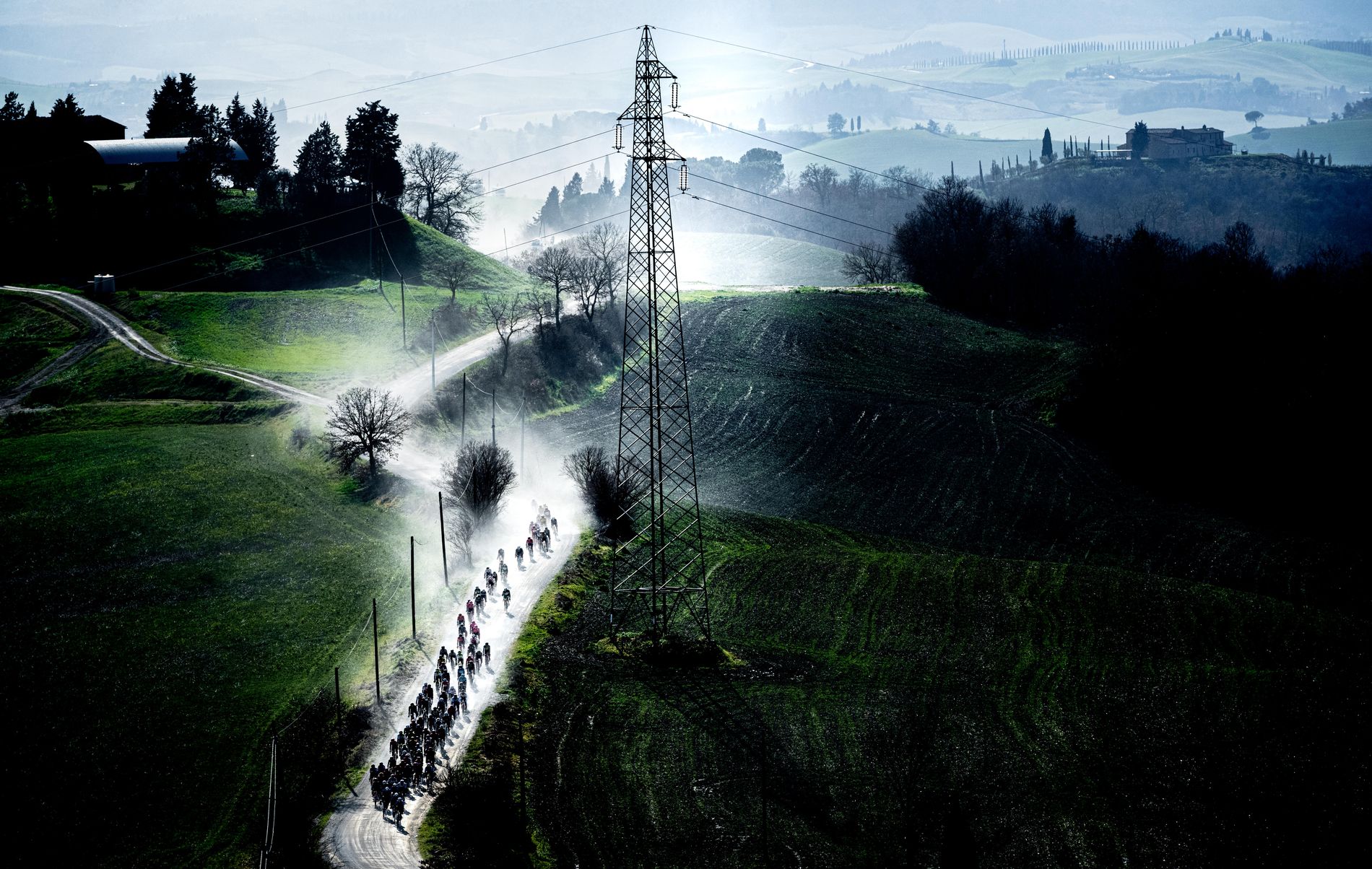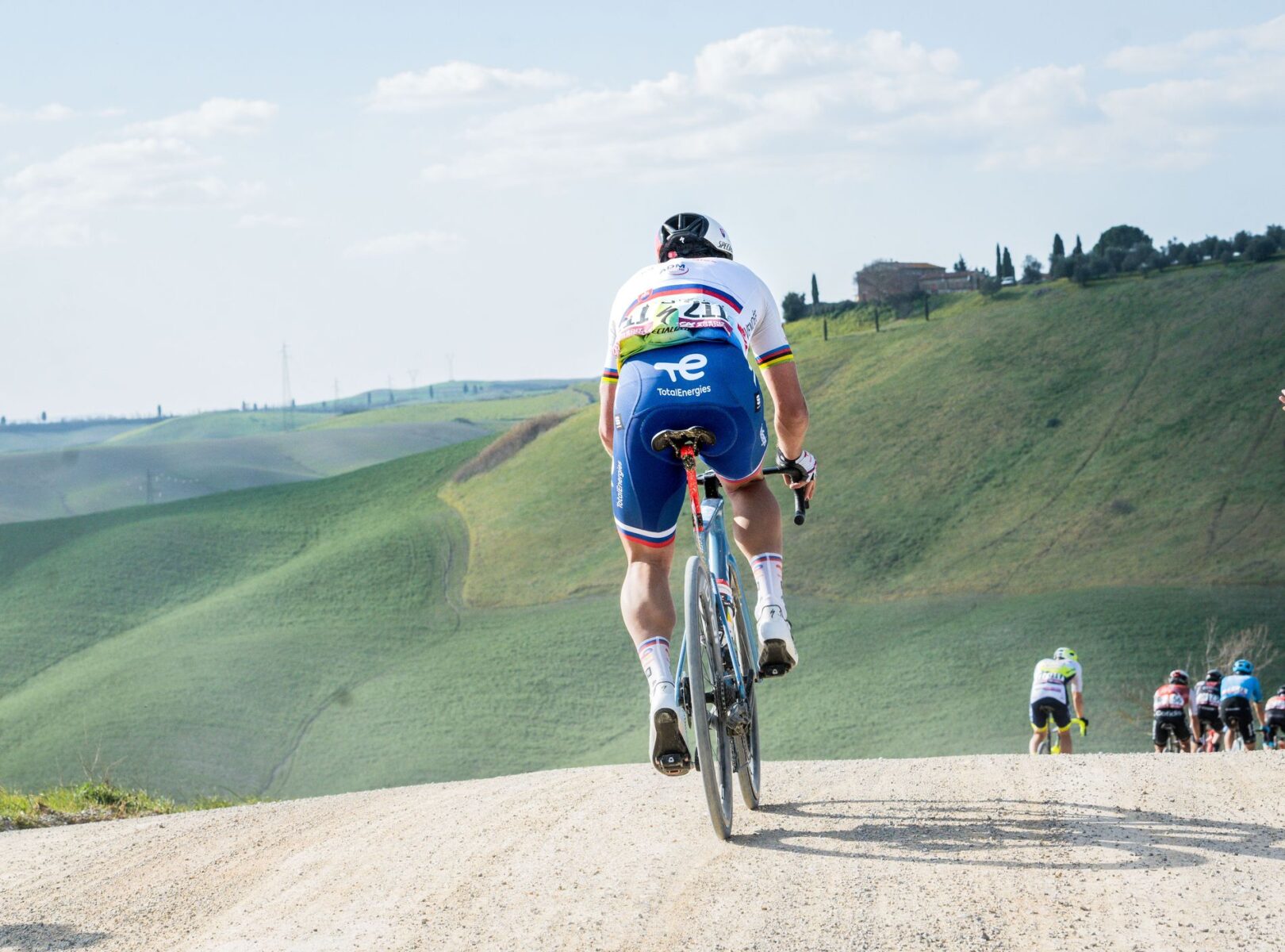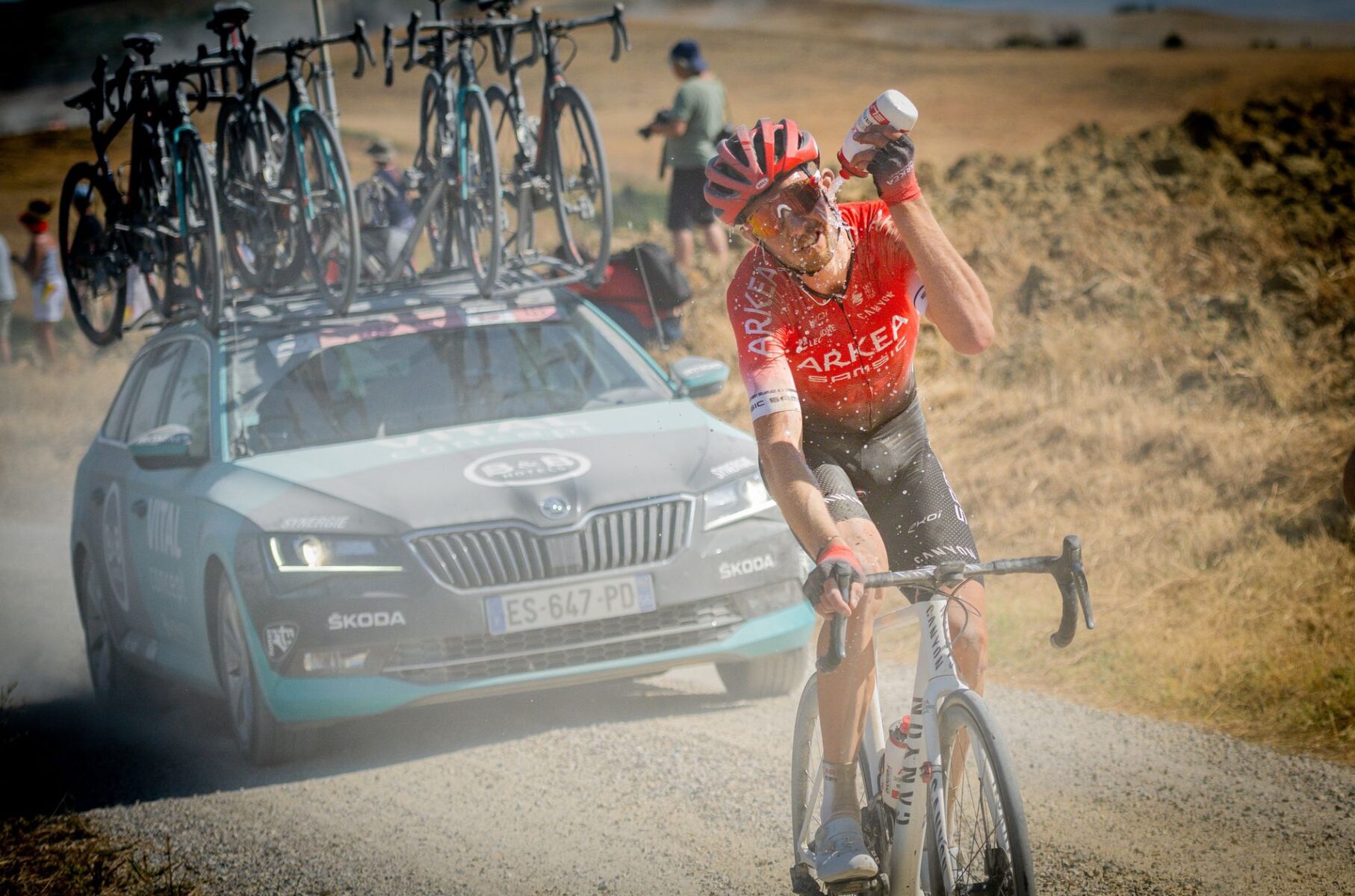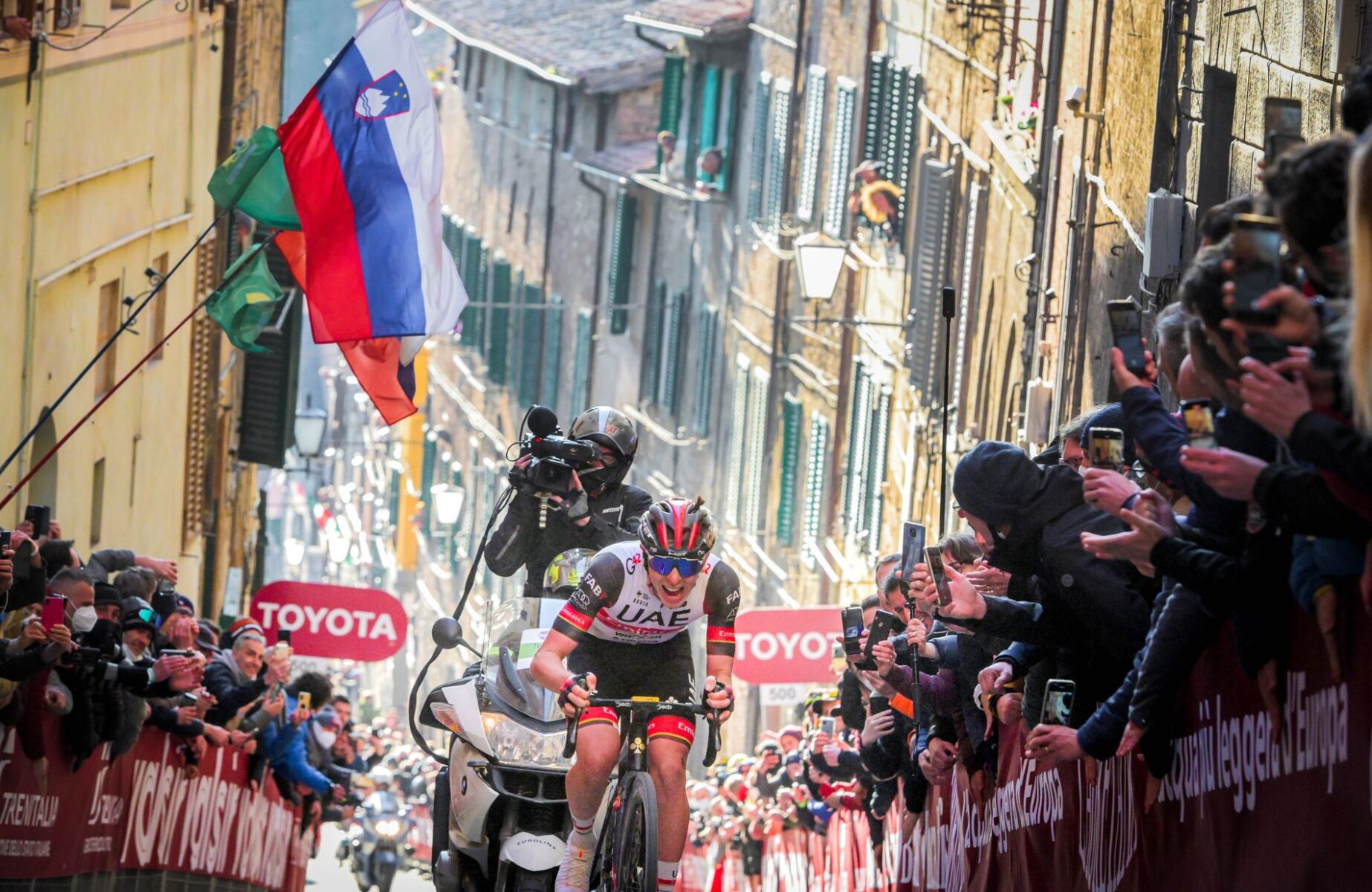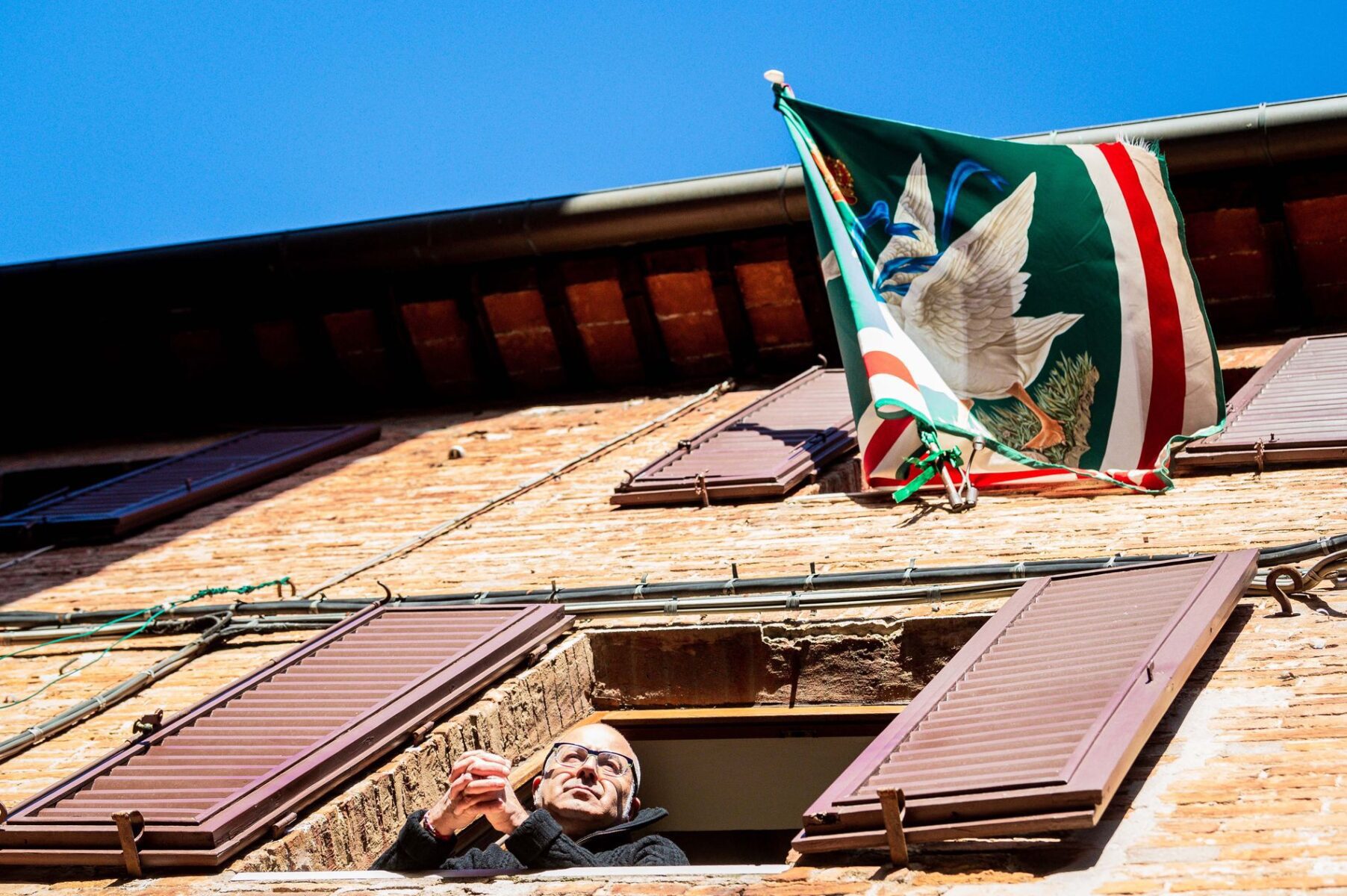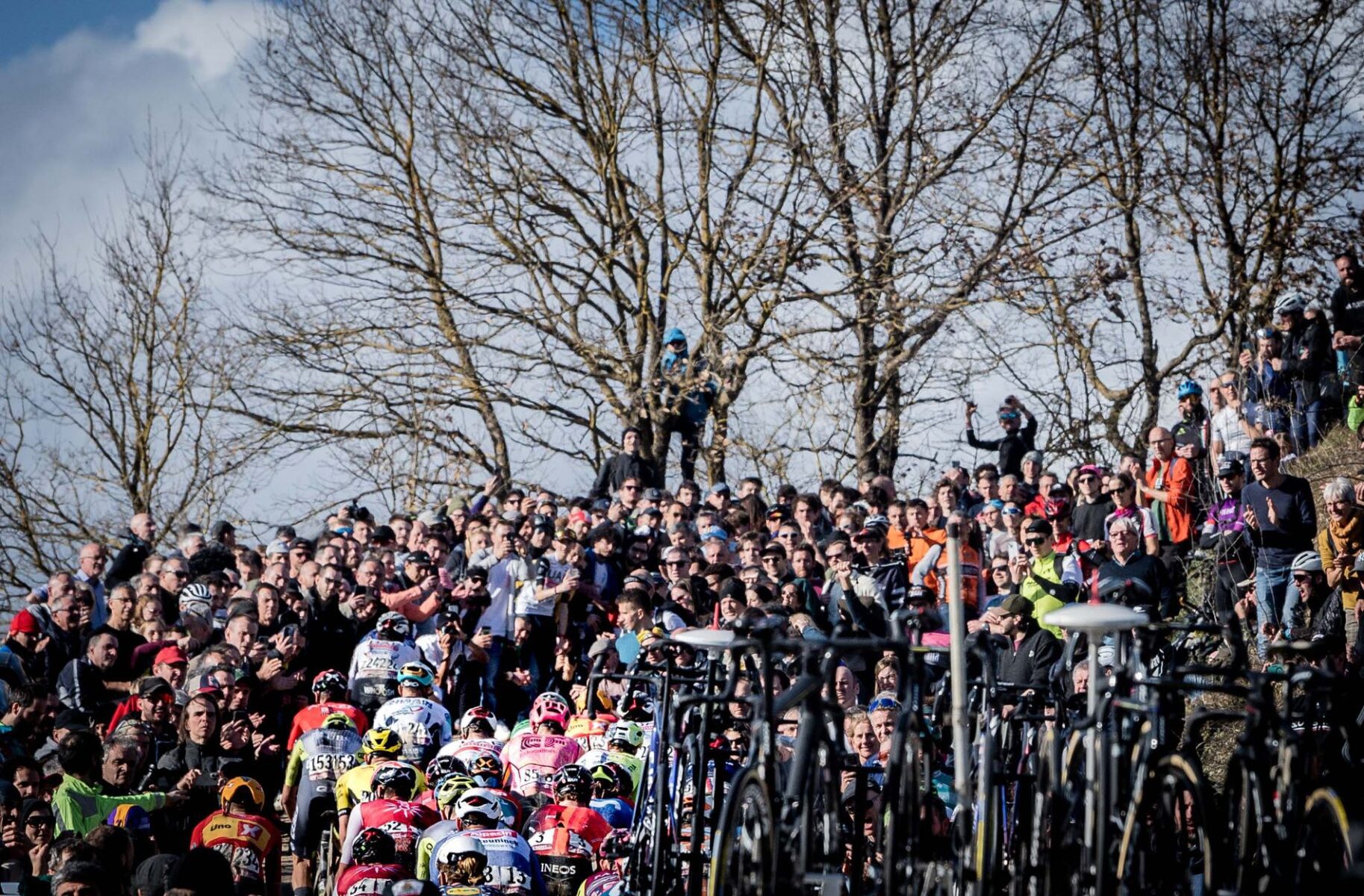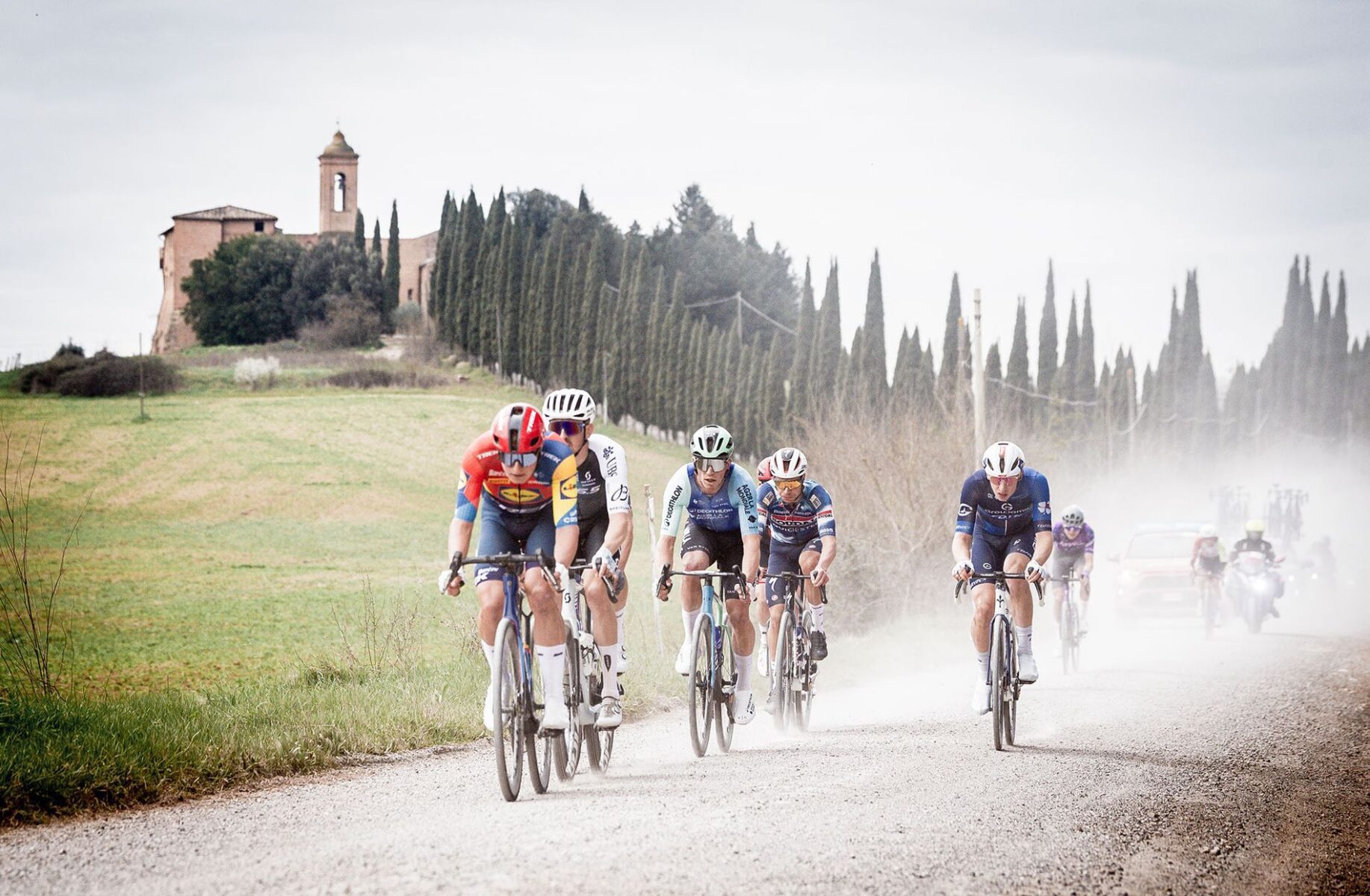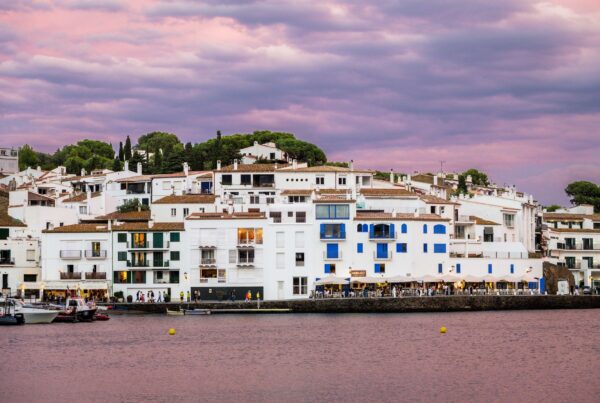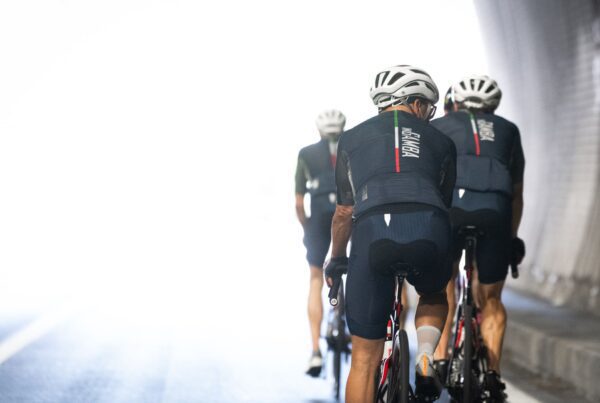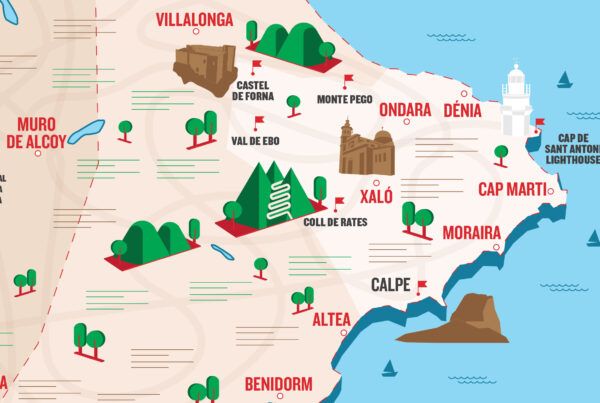InGamba worships the culture and the passion that goes into the Classics and the Monuments, and we bring that joy to our guests as well. Here, our creative director James Startt shares his Strade Bianche experience, which for him encompasses the rites of Spring.
It is said that there are some people who you only need to meet once in order to remember them forever. And the same can be said about certain bike races. To be honest, I came late to the Strade Bianche, only covering it for the first time in 2020. I guess we can thank Covid for that, as the second half of the professional cycling calendar was completely reshuffled, suddenly allowing me to make my way down to Siena to cover this race that had grown so quickly in stature.
Held in August, it was brutal edition as the intense heat and blinding dust wreaked havoc on the riders. But it was a day I would never forget… And I have been coming back ever since.
There are certain bike races that manage to transcend the sport and always leave me with the feeling that I have just witnessed greatness. Paris-Roubaix is like that. The Tour of Flanders is like that. And I instantly understood that Strade Bianche was like that as well. It was of little consequence that the race is not even 20 years old. In short, I was bitten by the bug.
Strade had something else to offer with the stunning landscapes and rich culture that surrounds it. As a student of history, Strade Bianche held an allure above and beyond many of the greatest bike races. First, there is the start and finish in Siena, this timeless city that was once of jewel of the Italian Renaissance.
I have long been frustrated by the fact that, while many of cycling’s Monuments start in magnificent locations, their finishes are, well, less so. Take the Tour of Flanders for example, which starts in the historic centers of cities like Antwerp or Bruges but then finishes on a nondescript two-lane road on the outskirts of Oudenaarde. (Roubaix, of, course finishes in the historic velodrome that simply oozes in soul.)
But nothing really can match the finish of Strade Bianche, which enters Siena via the steep, narrow Santa Catarina climb before dropping into the magnificent Piazza del Campo. With a stage like this as a backdrop, bicycle racing indeed enters the realm of high art.
And then there is the race itself, which laces its way through the Tuscany. As one of Italy’s largest regions, Tuscany is quite diverse and is home to many of the country’s most prestigious cities like Florence, Pisa and Siena. Its landscape, however, is quite diverse, but it is here though, in this south central corner of the region, where we find the most stunning landscapes, as hits muscular hills dotting with tree-lined roads offer the eye one postcard view after another.
But what truly sets Strade Bianche apart, of course, are the white gravel roads that give the race its name. Like the cobbles of Roubaix, they are largely farm roads for much of the year. But on race day, these roads are transformed into something much more.
The dust of the peloton can be seen well in the distance, only enhancing the anticipation as the riders approach each section. The gravel roads themselves also add an air of suspense as they are technical, sometimes even treacherous. As a result, the threat of crashing is heightened. (That said, they remain more accessible than the cobbles of Roubaix, which favor true specialists, and hence attract a more diverse peloton… and make for a fabulous tour whether charging hard or simply admiring the scenery.)
The discovery of these white roads and, more specifically, incorporating them into a major bike race, was nothing less than a stroke of genius by the race organizers and made Strade Bianche an instant success.
“Strade Bianche is maybe the best news for Italian racing in the last 20 years,” Pier Bergonzi told me in a recent conversation. Bergonzi, the editor of Sportweek, the weekly magazine companion to Gazzetta dello Sport, the sports daily that founded the Giro d’Italia, is one Italy’s most established cycling journalists in Italy.
“We call Strade Bianche the sixth monument,” Bergonzi added, repeating an a comparison often made between Strade and cycling’s most historic one-day races.
And to be honest, I could not agree more. The race has been good to me as well, and on two occasions I won the World Sports Photography Awards from images taken here. The first came in 2023 when I won the silver medal for my image of Pogacar coming up the Santa Catarina climb on the way to his first victory in 2022. The second time came in 2024 when I was awarded the gold medal for my image of the peloton making its way across San Martino di Grania section of gravel in 2023, with clouds of dust mixing with the haze of the hills in the background.
Simply put, Strade has it all, and ever since my initiation in 2020, it has been a priority on my calendar, to the point where I always come several days before to soak up the environement, to get out on the roads and off course to get lost in Siena.
And the fact that inGamba calls this corner of Tuscany home is of course a natural fit, as we are firmly linked to the beauty and history of the sport. Borgolecchi, our bed and breakfast, is only a few kilometers from Siena and we ride many of these same roads in our Chianti Classico trips. I know I will be there in the build up to next year’s race, as I wouldn’t miss the race for anything now.
Strade Bianchi, it is safe to say, has become my own personal Rites of Spring.
